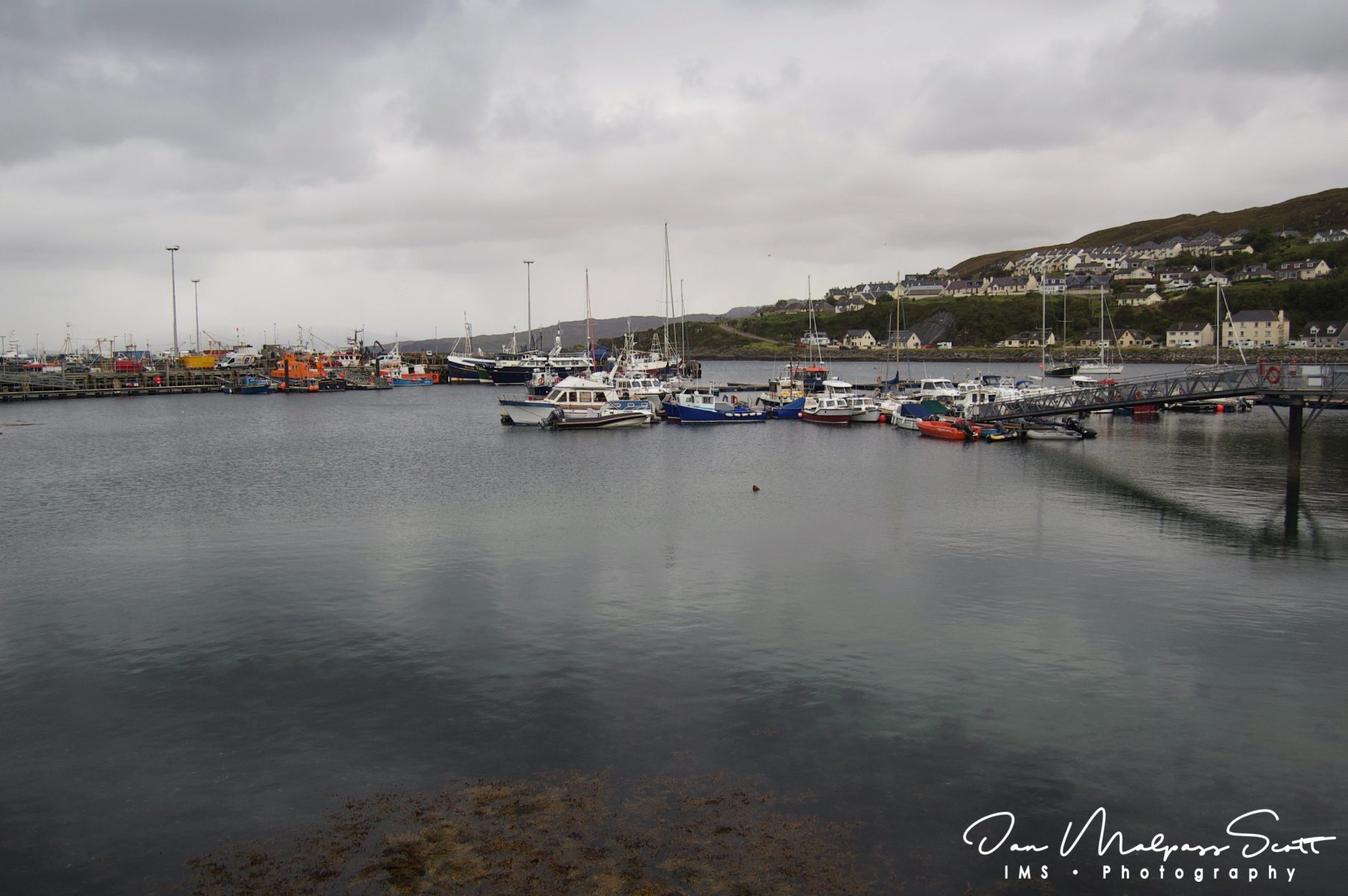The harbour at Mallaig, Highland
Mallaig (/ˈmælɪɡ/ (![]() listen); Scottish Gaelic: Malaig [ˈmal̪ˠɛkʲ] derived from Old Norse Mel Vik, meaning sand dune bay) is a port in Lochaber, on the west coast of the Highlands of Scotland. The local railway station, Mallaig, is the terminus of the West Highland railway line (Fort William and Mallaig branch) and the town is linked to Fort William by the A830 road – the “Road to the Isles”.
listen); Scottish Gaelic: Malaig [ˈmal̪ˠɛkʲ] derived from Old Norse Mel Vik, meaning sand dune bay) is a port in Lochaber, on the west coast of the Highlands of Scotland. The local railway station, Mallaig, is the terminus of the West Highland railway line (Fort William and Mallaig branch) and the town is linked to Fort William by the A830 road – the “Road to the Isles”.
The village of Mallaig was founded in the 1840s, when Lord Lovat, owner of North Morar Estate, divided up the farm of Mallaigvaig into seventeen parcels of land and encouraged his tenants to move to the western part of the peninsula and turn to fishing as a way of life. The population and local economy expanded rapidly in the 20th century with the arrival of the railway. Ferries operated by Caledonian MacBrayne and Western Isles Cruises sail from the port to Armadale on the Isle of Skye, Inverie in Knoydart, Lochmaddy on South Uist and the isles of Rùm, Eigg, Muck, and Canna. Mallaig is the main commercial fishing port on the West Coast of Scotland, and during the 1960s was the busiest herring port in Europe. Mallaig prided itself at that time on its famous traditionally smoked kippers, the fishmonger Andy Race still providing genuine oak smoked kippers from the factory shop on the harbour. Mallaig and the surrounding area is a popular area for holidays.
The majority of the community speaks English, with a minority of residents speaking both English and Gaelic. In addition, traditional Gaelic is still taught in Mallaig Primary School to pupils who choose to learn the language.


